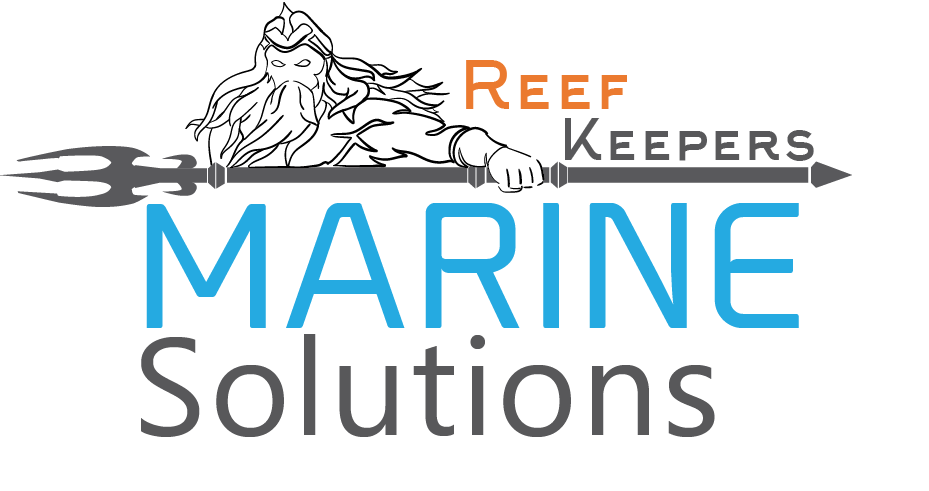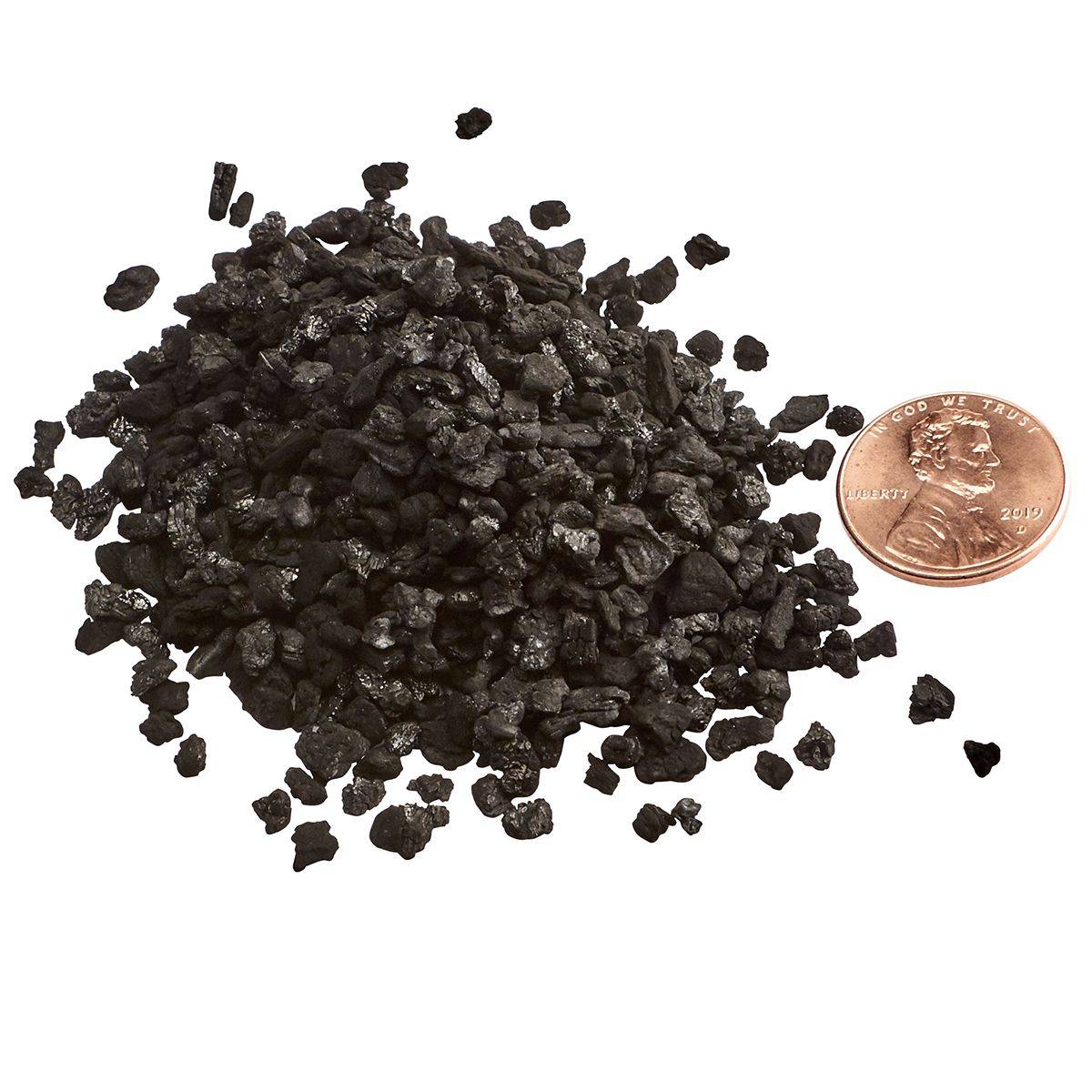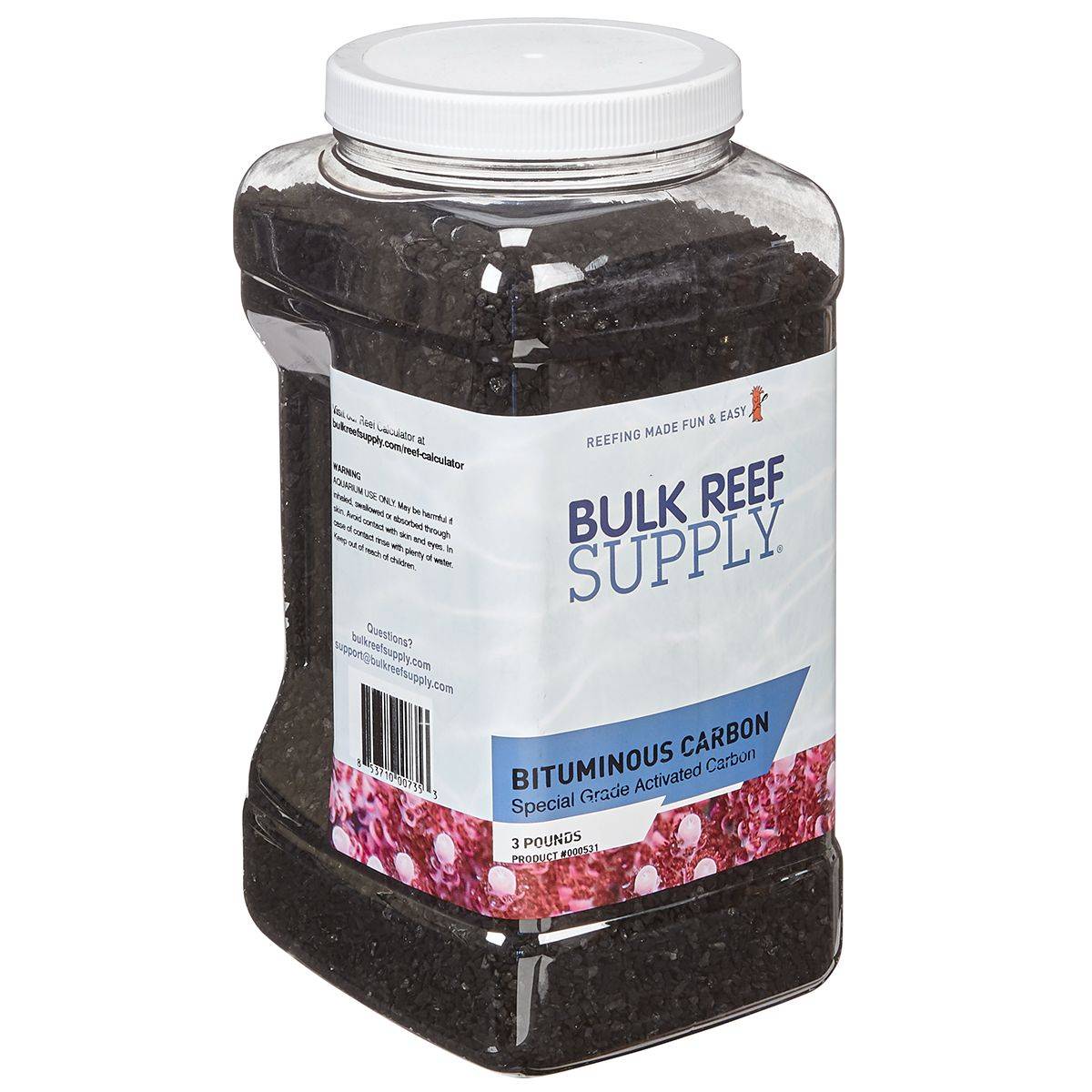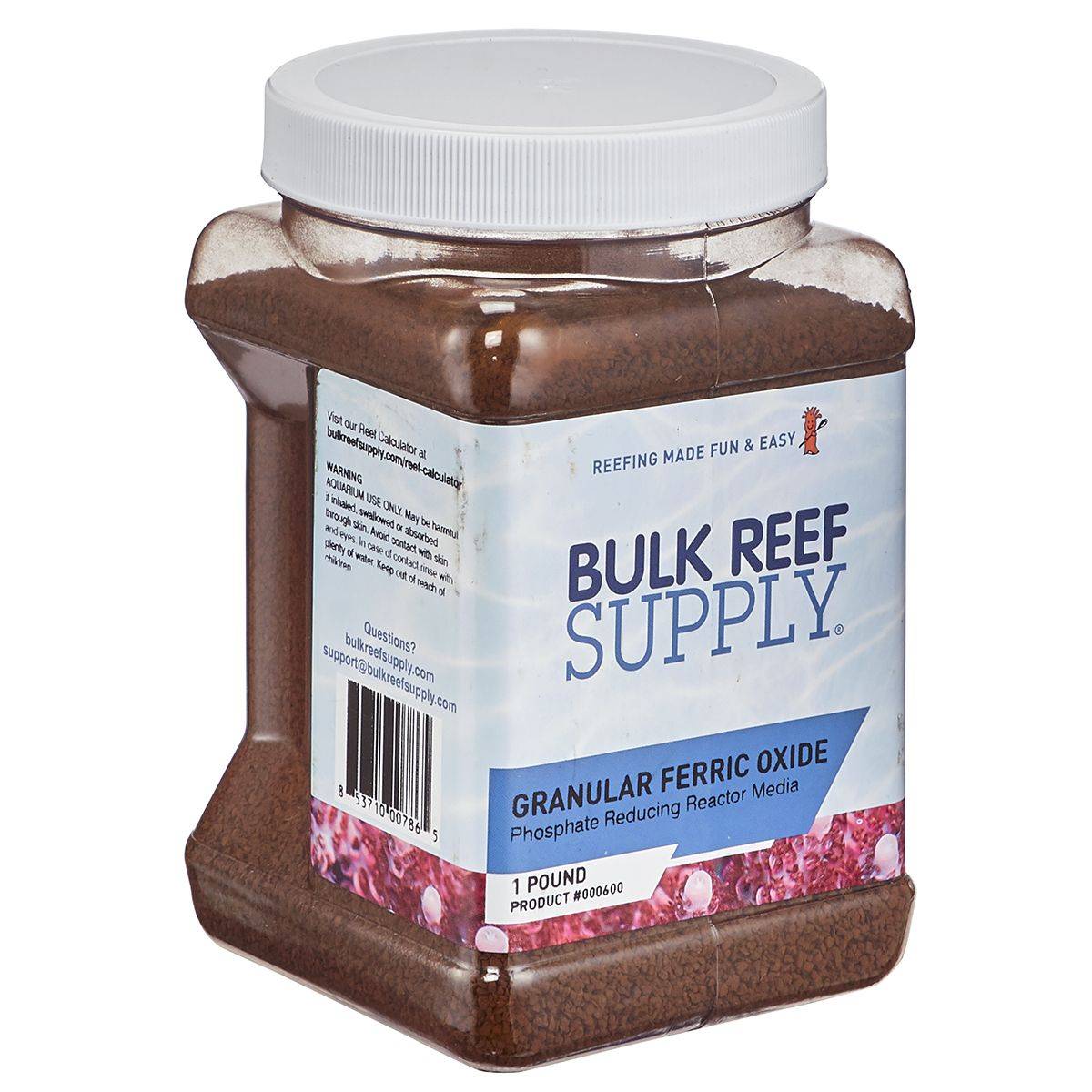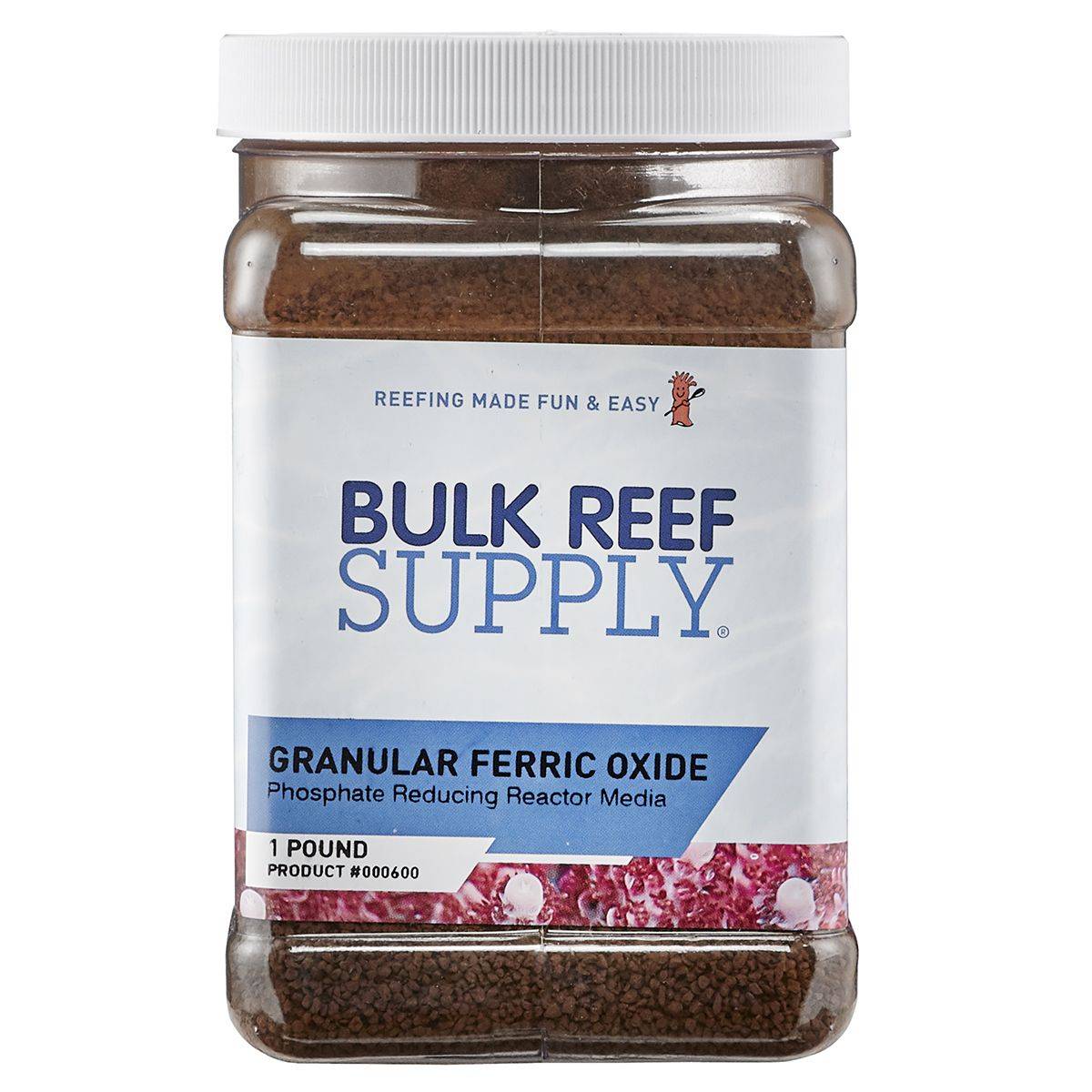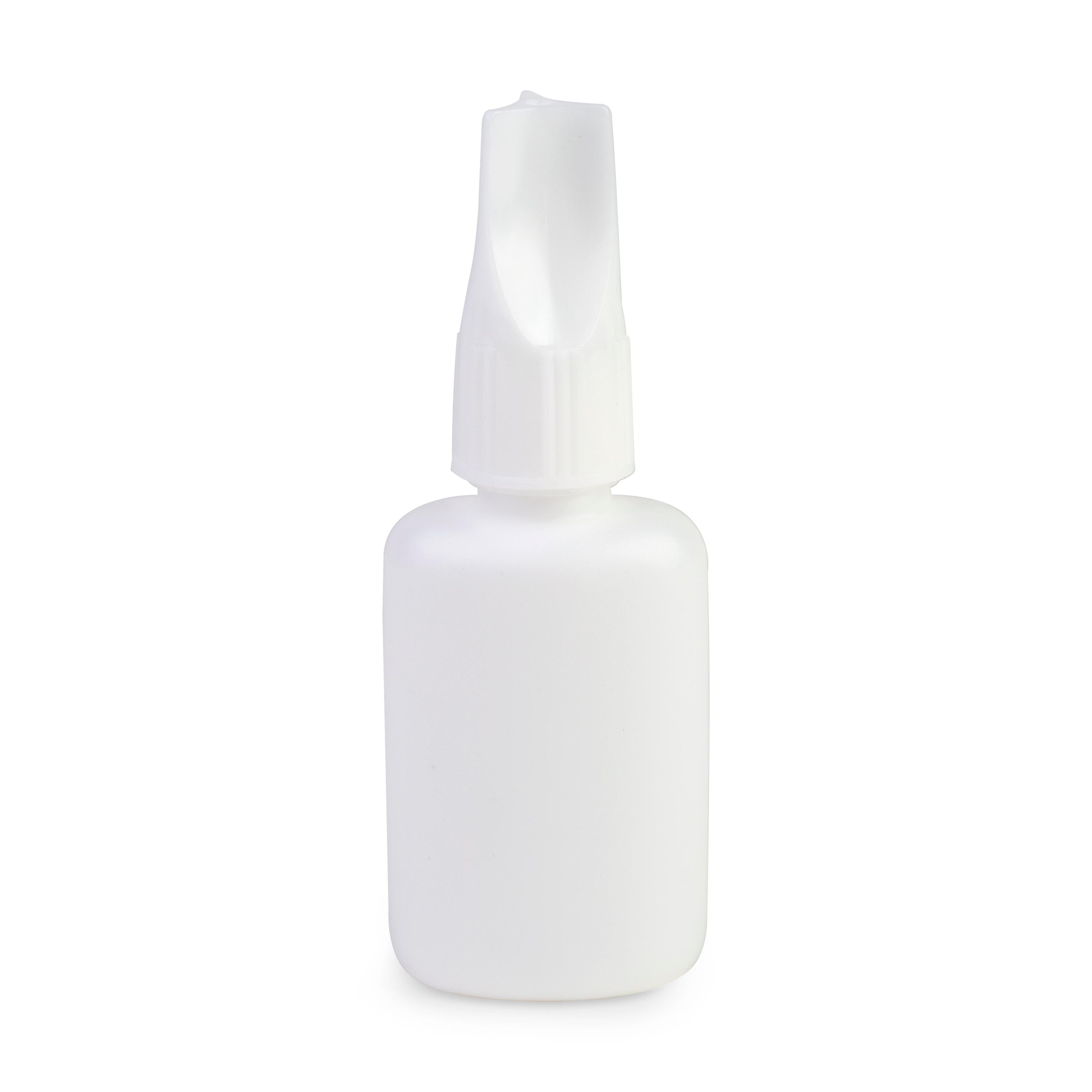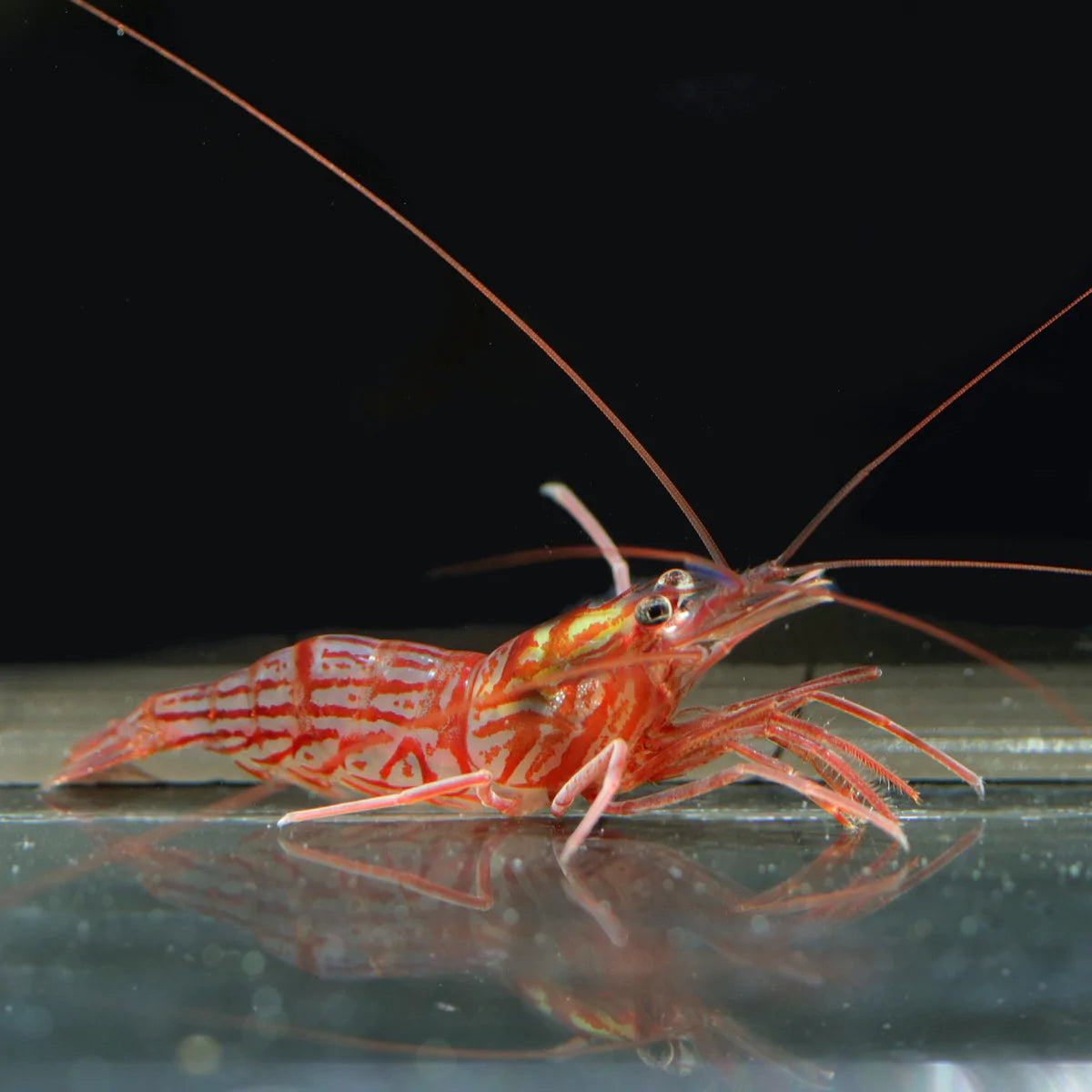
Peppermint Shrimp (Lysmata boggessi)
Max Size: 2 inches
Diet: Carnivore
Temperament: Peaceful
Reef Compatible: Yes
Minimum Tank Size: 10 gallons
The Peppermint Shrimp is renowned for its natural ability to control nuisance Aiptasia, commonly known as glass anemones. However, it's important to note that individual Peppermint Shrimp can vary in their effectiveness at managing Aiptasia, with some showing more interest than others. While categorized as part of the "cleaner" shrimp group, Lysmata wurdemanni primarily functions as a scavenger. It forages through your aquarium and live rock, consuming detritus, leftover food, and decaying organic matter. This eye-catching member of the Hippolytidae family displays a vivid coloration, featuring a transparent or creamy white body adorned with several slender red bands running lengthwise.
Sometimes referred to as the Veined or Caribbean Cleaner Shrimp, the Peppermint Shrimp is occasionally mistaken for its Pacific relative, Rhynchocinetes durbanensis. However, the latter species possesses a pointed snout and spaced white stripes on its body. In the wild, Peppermint Shrimp are commonly found in vertical reef crevices, and some even seek refuge within pipe sponges. To thrive in a home aquarium, the Peppermint Shrimp requires live rock for hiding places and open areas for scavenging.
Peppermint Shrimp exhibit social and peaceful behavior towards most inhabitants of a reef tank. Like other invertebrates, they are sensitive to copper-based medications and high nitrate levels. Additionally, they require adequate iodine supplementation to facilitate proper molting of their carapace. Besides scavenging, the diet of Peppermint Shrimp should include various prepared foods and occasional pieces of fresh fish.
Successful breeding of Peppermint Shrimp has been achieved in commercial fish farms and can also be accomplished in a home aquarium. However, rearing the larvae necessitates specialized feeds and care outside of the main display tank.
